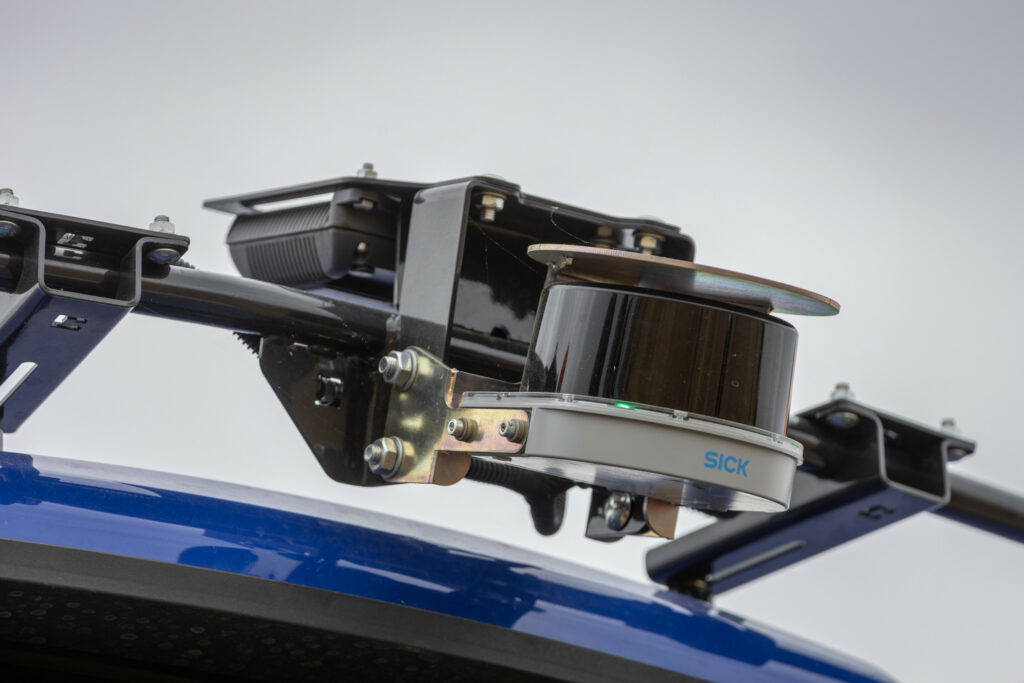Hands-Free baling with New Holland IntelliSense automation

New Holland takes a new step toward autonomy with IntelliSense automation for baling. In short: a roof-mounted sensor scans the swath in front of the tractor, and the software takes over steering. The driving speed is also automatically adjusted. A brief overview.
No, it’s not a GPS receiver on top of the tractor. It’s a sensor that scans the position and thickness of the swath. New software from New Holland, marketed as IntelliSense, uses this information to automatically control the tractor’s driving speed. Simultaneously, the system takes over the steering wheel, allowing you to bale practically hands-free.
The goal of IntelliSense automation is to relieve the driver and maximize capacity. The system should also ensure a more uniform bale filling.
New Holland demonstrated the new automation on a large field in Saxony-Anhalt, East Germany, where swaths of straw stretch to the horizon. But even in the smaller-scale Benelux region, IntelliSense automation fits well, as the system also works in grass and hay.
As a steering system
All the components you need for this function are mounted on the roof of the tractor: a mounting bracket, a wiring harness, a LiDAR controller box, and the LiDAR sensor itself. The unique aspect lies in the software, not the sensor, as the LiDAR sensor (a Sick MRS1000) is commonly used in various applications and can even be ordered online.
A LiDAR sensor determines distance based on laser pulses. This technology is widely used and can even be found on forklifts. New Holland now uses it to determine the thickness and position of the swath. The sensor scans 6 to 8 meters in front of the tractor.
In practical use, IntelliSense automation resembles a GPS steering system. You manually steer the tractor into a swath and then activate the automation with a button on the driving lever. At that moment, the tractor steers itself, and the driving speed is automatically controlled. As you approach the end of the field, a message appears on the screen indicating no swath is detected, and you resume control.
On the display, you need to input two settings before use: the maximum driving speed for the tractor and the thickness of straw packages to be pressed into the bale per stroke.
Text continues below picture

Software communicates with force-sensing pins
For those still skeptical about practical functionality, the software continuously communicates with two force-sensing pins in the plunger of the large baler. Thus, the software is not misled by swath thickness, such as when baling a compressed swath of straw from an axial-flow combine harvester.
The readings from the force-sensing pins are continuously compared to the LiDAR sensor results. Based on this data, the software adjusts the driving speed. This technology prevents overloading the baler while utilizing maximum capacity.
IntelliSense automation for older machines
IntelliSense automation is available as a factory option or as a retrofit kit for an existing baler combination. This kit consists of the four components mentioned: the sensor, controller, mounting bracket, and wiring harness. It all works via Isobus Class III – an Isobus feature that allows the implement to control the tractor.
However, IntelliSense automation only works with CNHi tractors and balers: New Holland, Case IH, or Steyr. The tractor must have a continuously variable transmission, GPS steering with Isobus connection, and Isobus Class 3 enablement. For large balers, they must be model year 2022 or newer, equipped with a weighing device, and require a software update.
The retrofit kit costs a gross price of €14,000. This technology will only appeal to those who bale large volumes annually. It frees your hands during baling. No more carefully steering over the swath all day, checking for tricky clumps in the swath, or constantly watching the screen to track the bale’s growth with each stroke. The automation takes care of it all for you.



